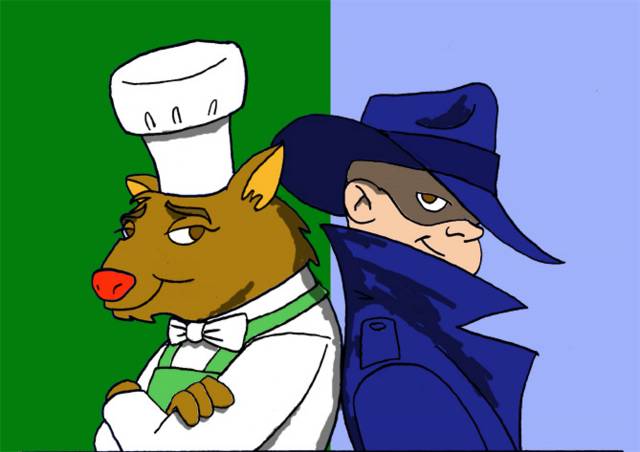The Animator's DVD Library
As an aspiring animator, I naturally want to learn as much about my craft as I can. Which is why I am grateful for the invention of the DVD player and its ability to show a movie one frame at a time. It makes it a lot easier to study how images move.
Of course, I'd say that everyone who seriously studies animation should have a DVD player, and in an ideal world, every animated feature that comes out should be in the animator's DVD library. But the Real World (in the form of the bank account) intrudes. What I want to do here is talk about the DVDs that are essential for the animator to own. (I'm including the Amazon.com links because some of these may no longer be issued.)
Obviously any Disney animated DVD is a must have for the animator. They're the ones who pretty much pioneered the art form, after all. But it's not really practical to own every Disney DVD, so let's be selective.
The obvious one to own is Snow White and the Seven Dwarfs, the one that started it all for Disney as a feature filmmaker. John Canemaker provides valuable insight, and the special features DVD contains an outline of the animation process, including concept art, storyboarding, and test footage. Serious Disney fans may find the historical timeline entertaining, if a little light on the details.
Another good one to have is The Fantasia Anthology, which features the original Fantasia as well as its 2000 IMAX sequel. The commentary for both movies describes the technical and historical aspects of the films even better than in Snow White. The bonus documentary for Fantasia 2000 is especially valuable for current animation students insofar as it shows how Disney's current technology is used to make a feature film. And the Legacy DVD contains a wealth of information, including pencil tests, concept art and storyboard information.
One would think that Behind the Scenes at the Walt Disney Studio would be a no-brainer for this collection. Certainly someone who is studying animation for the first time should view it at least once, especially the 2 Disneyland episodes featured: "The Story of the Animated Drawing" and "Tricks of Our Trade." The main feature, The Reluctant Dragon, is useful only insofar as one can get a sense of how a Leica reel should work, by watching its "Baby Weems" sequence. But I would be hesitant in suggesting that this is a library essential, because most of what is in here has been pirated as "bonus material" in so many other Disney DVDs, including the two mentioned above. But if you want something that's historical about Disney the animation studio, then this is a must-have.
My final Disney nomination is from the post-Walt era. Beauty and the Beast is certainly noteworthy because it's a Best Picture Oscar nominee. But this particular DVD also contains the New York Film Festival version, a "work in progress" with unfinished cells, storyboarding and pencil testing. This is essential viewing for the animation student, because it shows how important each part of the process (storyboard, Leica reel, roughs, pencil tests) is in making the complete feature.
I don't count the Toy Story movies as a Disney product because they're produced by Pixar Animation. I'd suggest that if you're going to deal with 3-D animation, you're going to want to study the Ultimate Toy Box set. You can see for yourself here that there's not all that much different in process between Disney 2-D and and Pixar 3-D. The complexities of 3D animation are something which are dealt with in detail here.
What about other studios besides Disney? There are 2 from Warner Brothers which warrant attention. The Looney Tunes Golden Collection is the priority item here. Not only do you have classic cartoons from the 1940s and early 1950s, you also have some excellent documentaries (including a historical documentary on the famed studio by John Canemaker) and interviewers with many of the great Warner Brothers animation directors such as Friz Freleng and Chuck Jones.
And speaking of Jones ... Chuck Jones : Extremes and In-betweens started out as a PBS Great Performances special. It's a classic documentary. A bonus feature includes many current Disney and Warners animators and film critics discussing the various principles of film animation that Chuck employs. There are also some good pencil tests thrown in that can really help out a budding animator.
Now, that's just seven titles. As you go further into the study of this art form, you may want to build this up more. If you have other recommendations or suggestions as a Library essential, please let me know by leaving a comment.





<< Home